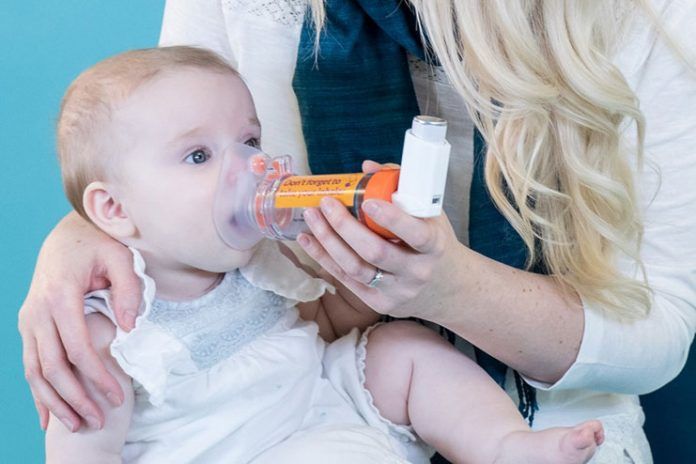Asthma is a very prevalent illness among children. In fact, according to 2017 statistics, an alarming figure, almost 1 in every 12 people was reported to have asthma, and the most common chronic disease in children in the US (R). This clearly calls for immediate attention. But have you ever considered the factors that may aggravate this disease?
A new study conducted by scientists from Simon Fraser University (SFU) found that repeated and prolonged exposure to household cleaning products significantly increases the risk of asthma development in newborns (R). The study specifically focused on the first three months of an infant’s life—a critical period for immune and respiratory development.
As reported in the Canadian Medical Association Journal, infants exposed to household cleaning products during their first three months of life showed a higher incidence of wheezing and were more likely to be diagnosed with asthma by the age of three.(R).
Dr. Tim Takaro, a professor and clinician-scientist in the Faculty of Health Sciences at SFU and the principal investigator of the study, observed that most earlier research linking asthma to cleaning products was based on adult exposure (R). This is why the SFU team took a different approach, focusing on infants, who spend 80–90%—if not all—of their time indoors, making them more vulnerable to airborne chemicals from household products.
Children observed with higher levels of exposure were found to exhibit:
- Repeated wheezing
- Wheezing associated with allergies (indicating a hereditary predisposition to allergic diseases)
- Asthma diagnosed by the age of 3 years
Exposure to second-hand smoke in the home is a well-known risk factor for asthma (R). However, the evidence remains inconclusive and warrants further investigation. Heredity also appears to play a causal role.
Dr. Takaro explained that the chemicals in cleaning products directly damage the cells lining the respiratory tract (R). This occurs through mechanisms involving the innate inflammatory pathways, rather than changes in the expression of acquired allergic responses.
Interestingly, the researchers also found that the effects were more pronounced in girls than in boys, raising important questions about biological differences in inflammatory responses between the sexes.
This research has been conducted using the analysis of data collected from 2022 children participating in the Canadian Healthy Infant Longitudinal Development Study (R). Each child was followed via daily aggregated measures and weekly and monthly accumulated measures of exposure to 26 types of household cleaning products.
Jaclyn Parks, a graduate student at SFU and co-author of the study, highlighted that the use of deodorants, dusting sprays, hand sanitizers, and floor cleaners at home made children more susceptible to asthma-like symptoms (R). Scented products, in particular, were considered more harmful due to synthetic chemicals and added fragrances.
Researchers have highlighted that this period is critical for the development of the immune and respiratory systems in children. Thus, reducing or entirely avoiding exposure to harmful chemicals in early life can greatly decrease the prevalence of asthma and other respiratory problems in children.
Also, Read: Top 9 Baby Products Every New Parent Needs: Essentials for Baby Care




















